Long empowered by their Instagram followers, New York duo Area are now shaking up couture.
Interview by Hans Ulrich Obrist
Photographs by Brianna Capozzi
Styling by Akeem Smith
Long empowered by their Instagram followers, New York duo Area are now shaking up couture.
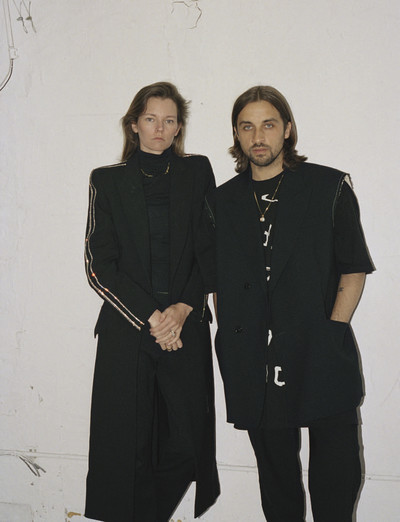
For eight years, New York label Area has defied the traditional logic of the fashion world. With no big-name backer and precious little marketing spend, its fame and sales ride on its fans: Kendall Jenner, Ariana Grande, Bella Hadid, Indya Moore, Michelle Obama, to name only a few. Founded in 2013 by Parsons School of Design graduates Beckett Fogg and Piotrek Panszczyk, and inspired by the devil-may-care aesthetic of the eponymous 1980s Lower Manhattan nightclub, Area projects a fascination with textile development onto exuberant ready-to-wear and high-glam accessories draped in duchesse satin, lamé, and the brand’s signature crystals. Told by the industry that its work was unsellable, Area sold it in spades. Most baffling of all, perhaps, is the label’s lack of a grand plan. Instead, Fogg and Panszczyk prefer to keep tabs on their social media, watch the whims of their audience, and follow their own followers.
And so in 2021, with the industry forced online, Area took a provocative swerve into the hallowed world of haute couture. As the Spring/Summer 2021 show season drew to a close, the brand stepped in with an unofficial entry: an audacious first couture collection showcased in a statement video starring models Precious Lee and Yasmin Wijnaldum. In conversation with leading arts curator Hans Ulrich Obrist, Beckett Fogg and Piotrek Panszczyk discuss elitism, club culture, and what makes crystals so very special.
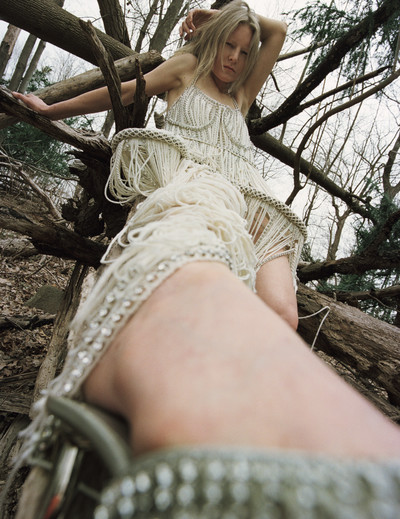
Hans Ulrich Obrist: Let’s begin at the beginning. How did you come to fashion? How did you decide to join forces and work together? Was it an epiphany or a gradual process?
Piotrek Panszczyk: It was a very gradual process, with epiphanies here and there. My first years in art school were, like, ‘Oh my God, why am I here? What do I want to do?’ I was born in Poland under Communism, and from a very young age I saw women hungry for fashion and self-expression that was out of reach. They could see it, but it was unattainable, so a lot of people mobilized themselves and started crafting. My aunts, grandmas, uncles – they were all in fashion, all making clothes for other people. They had it in their blood. That was my first connection with it. You didn’t really have to have a lot, but you could be creative. My aunts were all so glamourous. We lived in a tiny industrial city with nothing going on, but they had this spark in them. I realized you could create yourself through fashion; you could make your own well-being through fashion.
Beckett Fogg: When we started we were both quite young and definitely a bit naive, but you almost have to be naive, especially in New York, to launch a brand without a specific last name or an absurd budget. What drew us to each other was textile development and visual identity; when you look at something, it needs to be instantly recognizable before you see the label.
Piotrek: We both came to New York to do an MFA at Parsons, which was a new international programme: Shelley Fox started it; she came from London to work on it. Beckett was in the first year and was the only American alongside 18 international students; I was in the second year. We could walk into each other’s classrooms and look at each other’s work; Shelley really encouraged that. Beckett was embossing things, things were appearing out of nothing in 3D, and I was shaving away old, recycled thrift. Weirdly, we saw a connection there, in what you can do and manipulate through textiles. That was the very organic way we started working together.
Beckett: When we talked about starting a concept, it was so exciting. We went the opposite way to typical New York companies. For both of us it was really important not to be too, ‘This is what Area needs to be…’ We came up in the age of Instagram, and we allow our audience, our community of supporters, to dictate what Area becomes. That is where the name came from. We wanted something that was like a blank slate, a starting place. That is how we view textiles as well: something you can put your own stamp on. Around that time, a book about the club Area came out, which was super inspiring for us. We always reference it. It was a coincidence, but it has become ingrained into our identity, as well.
Piotrek: Area the club was like a block and a half down from us. I remember when we were sourcing fabrics in midtown, just trying to get something off the ground, all these old fabric vendors were, like, ‘Wait, the club Area is back?’ Area was this amazing creative force. Every weekend it had a different theme, it innovated itself; it was like culture digested and examined, and that was so inspiring for us.
‘You almost have to be naive, especially in New York, to launch a brand, if you don’t have a particular last name or an absurd budget.’
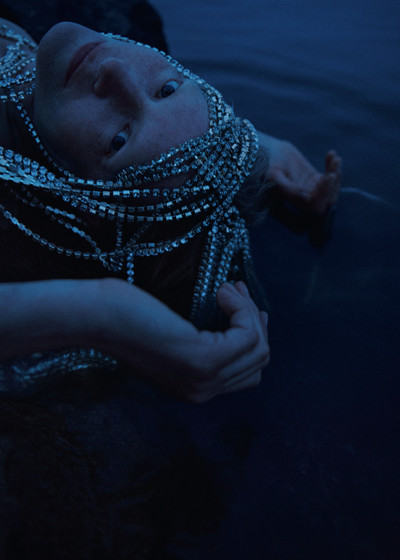
I wanted to ask, who inspires your thinking about fashion, in terms of your peers and previous generations?
Piotrek: The way we consumed fashion and showed it to people was steered in a certain direction and was quite whitewashed, like, you had to be a certain woman of a certain physique to be able to enjoy fashion or even to be chic. That has become a source of inspiration: how can we look at classic luxury, classic ideas of beauty – duchesse silk, YSL – and refocus that? Because when we look at our customer, she is interested in all of that as well, but maybe isn’t from X, Y, or Z. Why only show this type of girl? Why not this other girl, who maybe has more personality? Connecting with our customers is so important: their messages, their concerns, their issues, where they are from. We can analyse that. How does a woman see that dress? Does she wear it with heels or combat boots? These simple, logical things can also be part of the fantasy.
Beckett: Piotrek does whole days of historical research. We love to go to libraries, contextualizing and addressing conversations we have had on social media with our customers.
Piotrek: As a person who enjoys the history of fashion, research is such a source of opportunity. Looking at the 1960s or the 1950s or the 1800s, there is always some parallel in how an idea was being thought about. That is truly exciting to us. How can we study this material, learn everything about it, then break the rules?
Because of the club, your brand name is deeply associated with the 1980s. I spoke the other day to Honey Dijon, whose working practice grew out of 1980s club culture. Sadly, I didn’t experience New York in the 1980s, but Honey was saying how all the worlds came together. Togetherness is what we are missing so much now with the Covid-19 crisis, but more generally, something like those 1980s clubs is difficult to find today. What did you think was missing when you started Area?
Piotrek: It is about this idea of togetherness. I really think togetherness means contrast and being able to accept and love each other’s contrasts.
Beckett: With the end product, it is so inspiring when someone recognizes a reference, and then someone else looks at the exact same product and sees a completely different reference. We celebrate these differences.
Piotrek: We love quality, but hate elitism; it’s just about putting in an effort. It can still be luxury and high-end and amazing without being elitist. That is what I loved about the club: the idea of being this night star, where you walk into the room and demand attention. The eyes are on you; you are the queen of the night. People don’t know anything about you, they just know you are beautiful. Some might see only the superficial side of that, but there is something iconic about it, and it is so
New York.
Area in the 1980s was an institution, a symbol of a moment when clubbing was an art form. Warhol did the Invisible Sculpture installation there. It had themes: Confinement – very timely for now – Future, Suburbia. They would change every few weeks.
Piotrek: The art direction of the whole club was phenomenal. For our first show, we actually mimicked Area’s first invite, which was a Xanax pill in a glass of water that opened up and became an invitation. It was as glamorous as Studio 54, but different and grittier. From age 16 to 19, I worked at a club in Rotterdam similar to this. It was all art-based; every week, we would change the theme. At that time, there was this sense of nightlife, and you could feel it. We were on flyers throughout the city. People were known in this micro-community for being night icons.
Which were the first designs in which you feel you found your language? When did that first kick in?
Piotrek: The first collection was experimental. We were two young kids with not a lot of money, and we had to quickly find a way to make some. We had that love of textile development, so we thought, how could we apply that to something as mundane as a T-shirt, for instance? We started thinking, ‘OK, what if we fold a T-shirt in a neat square, and emboss the T-shirt in a flat plastic bag.’ We went to a factory for embossing leather in New Jersey that usually makes fake snake print, and we decided to create a Braille-like texture and embed that into a T-shirt. When the machine opened, what came out was this amazingly intricate, plastic, textured piece of square with a flat pack T-shirt in it. Opening Ceremony saw them and they were obsessed. When you opened the plastic, it literally makes a sound. Each T-shirt has a positive and negative texture on it that evaporates over time when you wash it, and you are left with a ripped T-shirt, so it becomes quite punk, quite fast. We sold 2,000 T-shirts in the first year, so from the get-go we had a product that sold. Then we were like, ‘OK, we have this super expensive lamé from Lyon, from one of the oldest mills. How can we use it?’ We made mini tube tops out of it, and all of a sudden this couture fabric became a millennial, Gen-Z top.
Beckett: We switched the grain, so even though it is a really expensive fabric, we were able to keep the quantity so low that the product didn’t need to be a thousand dollars; it could be $400. We started seeing that it could still be quality, but it needed to be done cleverly, so that young people could actually own it.
Piotrek: Buyers were not interested: ‘Who is this glamazonian? This is not realistic. No one wants to look like this.’ But once we put it out there people were really requesting it and constantly asking for it. We made a suit hand-embroidered with crystals to make a pin stripe. We were working with Charlotte Wales, the photographer friend of ours who was also just starting out, and she took amazing pictures of this suit. Bella Hadid saw it and started wearing it and then it went crazy and the suit was just not available. We were, like, ‘Oh fuck, we made something, but now people cannot buy it. How can we get smart about this?’ So that pinstripe became a tracksuit with a crystal stripe, and it came with a sweater and a bustier. And people were like, ‘OK, I can be lightly glamorous. I don’t have to go all out.’ With everything that seems complicated, we try to figure out a way to do it so it can become a signature. We had to fail a lot of times, too! That is how we started building these signatures: a lamé boob top; a crystal-fringed, cut-out T-shirt; a crystal mule; a tweed mini set with jewelled embellishment; and then a bowl skirt made of duchesse. All these pieces just became their own collection.
‘We came up in the age of Instagram, and so we really allow our audience, our community of supporters, to dictate what Area becomes.’
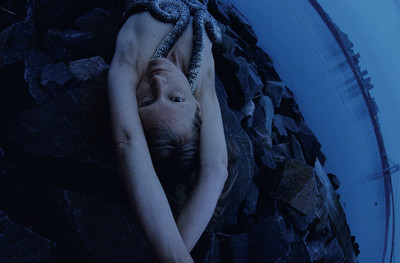
Like with art exhibitions, some fashion shows really mark a moment. Among your shows, which, for you, produced such a moment?
Piotrek: Fall 2018 was a moment. We did this show in the Deutsche Bank building…
Beckett: We agonized over the location; it couldn’t just be anywhere. This venue: yes, it is the lobby of a bank, but it is also a public atrium, a subway entrance. It was where Occupy Wall Street were.
Piotrek: This very iconic 1980s architect designed it, and it is like a futuristic Miami. We were such a small team. Every collection we were learning something new, but when we got to that show, we thought ‘OK, these are our fabrics, these are the graphics we like, these are crystals we love, and this is our casting.’ People were suddenly woken up, where before people were not taking it seriously. New York has a long queue and is so political, and things can stay underground for a long time. It is really about that upper layer, but we didn’t want to be part of that.
Beckett: You can pay to have a platform, but then it is more challenging to get the credibility.
Piotrek: And we were not those kinds of people. We might fail, but at least we tried. In this show, the whole language came together. There were these oversized hoops, and the metallic fabrics and the crystal elements.
Can you talk about these features? Because they seem to be recurrent. I am particularly interested in the crystals.
Piotrek: In the beginning, we didn’t really understand why we liked them so much, but we always had this sentimental connection with jewellery. All the jewellery I own was given to me by my parents or loved ones. And also, historically, what it means in certain cultures, like crown jewels, a status symbol. But also not a status symbol…
Beckett: Because crystals are like the fake version of these treasures. Are they couture? Are they high street? Are they fake diamonds? Are they Swarovski? I think people bring so much of their own history.
Piotrek: People get nervous: are they fake or real? We saw tension between what is seen as couture and what is seen as mass-produced, and how that weirdly interconnects. Then when we had them in our hands, we started understanding that we liked them in a chain form, but it is actually a modular form that has its own properties.
Beckett: We are still learning so much about them. There is so much each season and it keeps building up.
Piotrek: Even Swarovski are now, like, ‘Oh my God, we have never done this.’
‘Many young people are no longer into fast fashion; they want to know how complex and elaborate something can be. It’s about a pure love of the craft.’
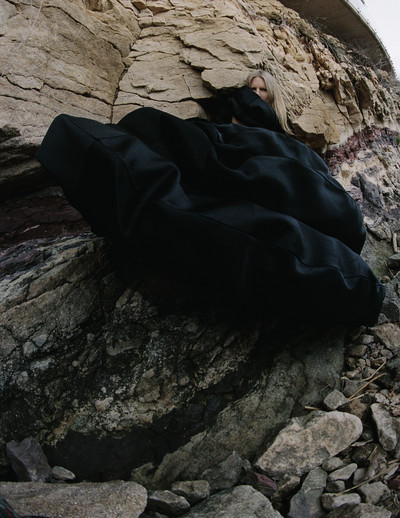
Would you both say that you are making clothes for more discerning and more assertive people? How do you go beyond binaries in your fashion?
Piotrek: First of all, I really do think that Area is an acquired taste. We like it that some people might not like it.
Beckett: It’s more about power, and not about gender or how feminine you are. It is more interesting when there is a huge spectrum of people who are attracted to it, but all are strong individuals.
Piotrek: Exactly. Our clientele is so diverse; from super young to 80-plus, with extremely diverse bodies, diverse lives. Obviously, we have a strong opinion of what we think is good, but it is really about listening to them and saying, ‘OK, so you don’t like to show your arms? Well, we have an amazing top for you.’
Beckett: It is about really being proud of your achievements, about celebrating your confidence. We are not catering to one person in one place, which is why we are resonating in so many different parts of the world.
Has social media played a role in the development of your brand?
Piotrek: Honestly, us and social media, I think it was just meant to be. When we started, I had just started dating my husband, Kareem, who is in charge of our whole digital side. We started slowly, built a visual identity that people could understand, and people gave us feedback and started to follow us. The turning point was almost eight years ago. Kim [Kardashian] wore our fur bra and in the same week Bella Hadid wore another one of our looks, and we thought about how our Instagram could become almost like a tabloid. We started putting our stuff in rows of paparazzi pictures of these girls getting out of a car, almost like the iconic Meisel shoot for Vogue Italia. Then, it was like, how can we use images that are out there, and start curating them? Kareem really has a knack for that, things like girls stepping on gum or a twisted shoe.
Beckett: And looking at what people are attracted to and why, and thinking
about that when we produce our own content.
Piotrek: In our first years, we were going to the salons in Paris, and we had one or two appointments and sometimes no one came. We were sitting there almost crying, but then we were like, we have this fur bra and these jumpsuits. So Beckett put it all on, we cropped it, made videos, put them on Instagram and they started flying all over the world. We are like our own magazine: we have our own visuals, we reach out to photographers who we love, like Paul Kooiker. We want to make work that exudes this energy.
Can you talk about the latest collection?
Piotrek: This collection was conceived in the height of the pandemic. Just before the lockdown we were, like, ‘There is something with this fashion system that doesn’t sit right.’ I think the lockdown really gave us a chance to ask, ‘How can we do things in our own way?’ Honestly, with the stores, it was a mess; no one knew what they were doing. Buyers were still asking for the same things.
Beckett: They didn’t know how long it was going to go on for.
Piotrek: Everyone was like, ‘We want jersey, we want comfortable, practical’, but our e-commerce was the complete opposite: people were buying lamé, crystal hairpieces, high glamour. That was a weird disconnect, like it was spiralling out of control. So we started to think of this spiral – you can build it into a breast-like shape – and how that could stand for these times. We started thinking about workwear and Prince of Wales check suits, but we cut the sleeves and the lapels off. We made breast coils. Crystal was the biggest thing for us, but how could we give the stores something soft? There were these iconic pieces that we had already created, like a braided crystal couture dress in our Fall 2020 show, which were super intricate. We took that piece, put it on a mannequin, photographed it, printed it, scanned it in again and screen-printed it on a T-shirt dress and gown, and it became this memory of what fancy couture was. It almost looked like a nostalgic band T-shirt. The same for the dress: we did all the same things and it ended up looking like armour, but you could do yoga and sports in it. It was about pushing these core elements in different ways and keeping them simple and casual.
Do you have any unrealized projects?
Beckett: There are a lot! Just looking at the desk right now, there are crystal carcasses everywhere from seasons before. The crystals are modular, so these little pieces are not discarded; they become the starting points and elements that we build from.
Piotrek: We are really hungry for places and people and institutions who are ambitious and will say, ‘Let’s do it!’ We really wanted to do couture. Did we have a billion dollars to do couture? No! But did that mean we couldn’t?
‘We really wanted to do couture. Did we have a billion dollars in order to do couture? No! But did that mean we couldn’t start doing it?’
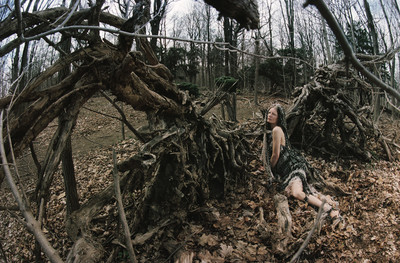
The epicentre of couture lies in Paris, in a centralized model that doesn’t correspond to a more decentralized notion of the world. How can one deal with such a conservative notion?
Piotrek: That is a really good point. Couture is so heavy; it is the establishment, basically. But before we even started thinking about that, we were doing the work. We are passionate craftsmen who are excited by the actual handwork. And when we made the decision to do couture, we thought, ‘Do we even need to go to Paris?’ Someone in France decided that haute couture lives in Europe, but to me it has a much deeper past, like ancient civilizations, something from the core of your heart…
Beckett: The ultimate expression.
Piotrek: Exactly. Globally, in so many places people are really good at specific things. Like, a certain type of embroidery in southern China is way more intricate and specific than a certain embroidery in India. These nuances are so diverse and rich. That liberated us and made us think: is couture purer and democratic? Is it more about dedication to that kind of work? It was also: can we do this in New York? We started and everyone who was part of the project dedicated months to it; everyone was so proud of the pieces. That process of conceiving clothes was so encouraging. Many young people are no longer into fast fashion; they want to know how complex and elaborate something can be. That, to us, is what couture is: a pure love for the craft. Going back to bodies: we started looking at mannequins, and how deeply ingrained this visual of a mannequin is in women’s psyches. A lot of people probably have eating disorders without even knowing because of the way fashion, for years, has presented a certain image to people. I have a lot of friends who, because of the images that they always consumed, now have this annoying thing in their 40s and just cannot be happy about themselves. And that troubled us. A couture client is usually not that mannequin; it is normally an older lady who is loaded and who could eat all day and still be fabulous! We just started seeing it as so homogenized, and understanding that couture could speak to different shapes.
Beckett: One thing about couture is this made-to-measure aspect. I mean, why would you not celebrate all of the different bodies and different ways that you can make garments?
Piotrek: Having someone with a lot of breast and a belly, that is when you have to understand the body and gravity and fabric. Is it heavy? Is it compact? All of these very subtle things become important. It becomes like sculpture. It was liberating for us to do, because we are so passionate about it.
What is your opinion about the Fédération de Haute Couture de la Mode? Could the new wave that you have launched create a counter-model? Could the new school produce a new organization?
Piotrek: If that happens, I hope it would not be a federation, but an old-school guild with craftsmen coming together to say, ‘This is what we have – what do we need to do to survive?’ Not this bullshit elitism. When we started talking about couture, we didn’t want to ruffle their feathers. When I started consuming fashion, obviously I was captivated by YSL, Ungaro, so many others, and I wanted that beauty and art. Actually, we approached the Fédération and told them that we want to do this, would you be open to hosting us – this was before the pandemic – and they were, like, ‘Come to Paris.’ They have such a rich culture in fashion; they know where everything comes from, technically. Could that become more like a platform where you help young people to thrive? Because there are not many people who want to be a première or a seamstress or a pattern maker. I think it is important for the Fédération to see that and to educate these people, and make sure the craft doesn’t die, because if it does then they will also disappear.
Beckett: Just like it’s important to celebrate all of the other places around the world that make these beautiful pieces. If it all goes back to being in-person with a runway show, a salon, a presentation, a showroom, we don’t always want to be locked into Paris again. Why can’t it be in Copenhagen, Shanghai or Moscow? What are their techniques, their crafts, their heritage?
Piotrek: You can call it institution or you can call it dictatorship, but institutions can realize that they were part of a problem and think, ‘Oh, we could do it differently, we have the capacity to fix it.’
‘Someone in France decided that haute couture lives in Europe, but to me it has a much deeper past, like ancient civilizations.’
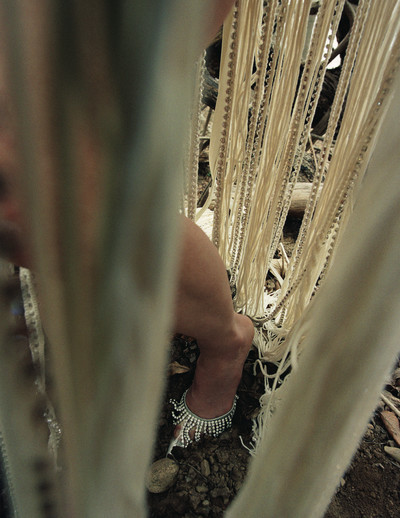
One last thing: there is this little book by Rainer Maria Rilke, Letters to a Young Poet. What would be you say to a young fashion student in 2021?
Piotrek: See the power that fashion has, the effect it can have on people’s lives. It can create jobs; it can create self-esteem. Be respectful, but stick to your guts and guns and know that it is not going to happen overnight. It needs to season and you don’t need to know everything from the get-go. Fashion is such an internal thing and maybe it is good that you don’t know in the moment what you are exactly.
Beckett: You have to be open to things coming your way that you didn’t expect. It is so much better when things happen that you don’t expect, and you have to respond to them. That is when the best opportunities happen.
Piotrek: And take all these opportunities and risks while you are still a student. Don’t later look back and think, ‘Fuck, I didn’t do it.’ Instead, be like, ‘I did it, it didn’t work.’ Two years later, you are still only 24 and things are good.